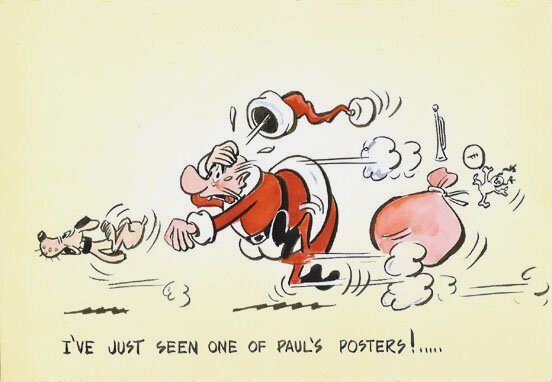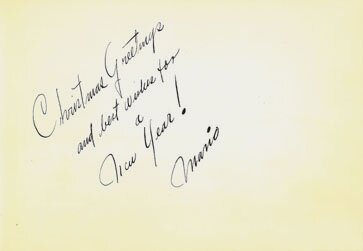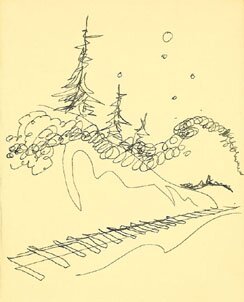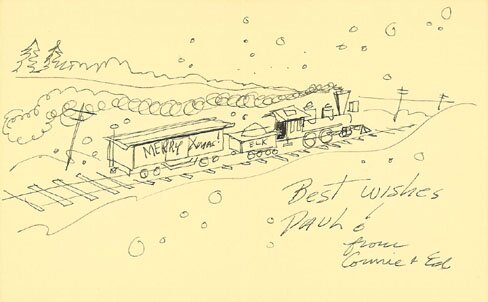
|
PRESUMED IMPOSSIBILITIES, continued1, 2 PHOTOGRAPHY, continued1, 2, 3, 4 PORTRAITURE, continued1, 2, 3 COMMERCIAL ART, continued1, 2, 3, 4, 5, 6, 7, 8, 9, 10, 11, 12, 13, 14, 15, 16, 17, 18, 19, 20, 21, 22, 23, 24, 25 AUTOBIOGRAPHY, continued1, 2, 3, 4 |
|
In the preceding I mentioned my status as soldier, as I did on my commercial-art pages in connection with my beginnings in the U.S. As I noted, I had difficulty finding work in commercial art and decided to join the Army to give myself some sort of start of a secure livelihood in this country. This was more urgent to me because I had to before be accommodated by my newly known relatives, and it was of course not a dependence I wanted. As I mentioned on the previous page, among my relatives here were also two cousins, brothers, I met in Europe, who were instrumental in my emigration and are pictured as young boys on that page. After joining the Army, as I recall, when on a leave I visited the older one, the one with the shaven head in that picture, in Washington D.C. where he lived. He showed me around the town, and I recovered the first two pictures below, taken on that occasion. |
| This is my spoken of cousin with his American wife at a nondescript "swimming hole" in D.C. He had a wonderful smile, but was quite a rough guy. I like that he wore a necklace, barely visible here, with the Star of David. He died very young. | It seems I am acting strangely here because the water was cold. I was so thin then, probably still the aftermath of wartime, that I could put my open hands around my waist so that my thumbs touched in the back and my middle fingers in front. | |||||
|
This of course is past basic training. As I said on another page, I somehow came to do artwork in the 2nd-Army headquarters, where the kind officer in charge, I think a major, soon promoted me to corporal (the two stripes are vaguely visible on the sleeves). Again, I am not sure that wearing a hat and no tie is allowed by Army regulations. |
|
Later I felt bad that that major, assuming that was his rank, became angry as a result of a misunderstanding. As I wrote on the page with the just mentioned artwork, I responded to an ad in a military magazine, which was looking for an artist for the Recruiting Publicity Bureau, located in Fort Jay on the above referred to Governors Island in New York. I went there to take a test by drawing or painting something, and was accepted. On asking the person in charge what I should do where I was stationed (Fort Meade, Maryland), he told me not to do anything, that he'll have me transferred. When the order then came for me to be transferred to Fort Jay, my commander was offended that he was not consulted. I hope he soon forgot the incident. 15 September 2005 On Governors Island, as I said on a commercial-art page, I had the opportunity to design recruiting posters. As I also noted, the room we worked in, though the work seemed important, was rather cramped. The officer in charge, a captain, was also not as nice as the mentioned one, presumably a major, in my previous place. I was too shy to ask for a promotion in either place, and the captain didn't think of promoting me, despite my going as far as having a poster design I painted put into print. After a length of time there, as I also wrote, I was hospitalized for a case of colitis, an intestinal ailment. Although I never suffered much as a result of it, it eventually led to my medical discharge. In the meantime I was shipped to an Army hospital in Fort Devens, Massachusetts. Hospital or not, I must say it was a pleasant period. The sprawling connected buildings included everything from a movie house to a spacious canteen to a recreational facility run by the Red Cross. At the last, I came to design (voluntarily, of course) the displays informing of weekly entertainment, and not surprisingly I kept busy with similar other things to occupy my time. I also had a chance to take trips to Boston, a customary testing ground for new Broadway productions, and I remember seeing Diamond Lil with Mae West, Mister Roberts with John Forsythe, and Kiss Me Kate with all sorts of stars. By today I lost interest in such things—maybe a sign of age. The pictures below reflect the easy atmosphere during the hospitalization. |
| As ambulatory patients we could wear standard uniforms, beside being able to go outside the hospital as described above. This is on hospital grounds, surrounded by pleasant greenery. | Evidently the same grounds, except that we two patients (I am on the far right, to make sure) are wearing hospital clothes, on top of pajamas, I believe, and maroon in color. The lady was, I think, a Red-Cross worker. | |
|
After my medical discharge, in 1950 with two years of service, I had to face the commercial world again, not sure how I will do making a living. The captain I spoke of in the preceding was, I have to admit, good enough to give me a couple of recommendations. In his position he used the services of people outside the military, mainly in New York, among them for instances the known illustrator Albert Dorne, for one of the posters as seen on another page. It wasn't easy regardless. 16 September 2005 In regard to my above referred to hospitalization when stationed on Governors Island I managed to dig up two hand-drawn greeting cards by fellow artists there, who sent them to me at Christmas time while I was still at the station hospital. My colleagues probably knew I was Jewish, but I suppose sending Christmas greetings is so common that one doesn't give this a thought. And I certainly did not mind a bit their thoughtfulness. 27 September 2005 |
 |
The author of this greeting, Mario, was of course young like me but evidently a very talented cartoonist. I am enclosing also the inside greeting, from the third page, and the envelope, both much reduced. |
 |
 |
|
| The author of the next greeting, Ed I presume, I actually can't remember. There were only about four of us GI artists there, and he was likely one of us, since, as can be seen, he could draw quite nicely. |
 |
 |
|
|
The first image is of the cover, and the second of the open inside. Again, I am enclosing the envelope, which may be of interest because it may be seen that the regular postage stamp was only 2¢ in 1949. |
|
| AFTER DISCHARGE FROM THE ARMY | To the top and choices | |